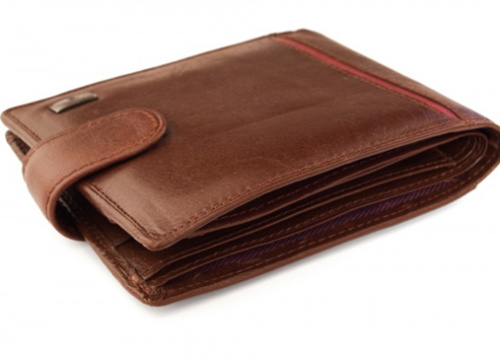It’s not official, but good journalists at Wired and the Financial Times reported Thursday that Apple’s next generation of consumer devices — iPhones for sure, wearable devices maybe — will come equipped with a NFC (near field communication) chip for making mobile payments.
虽然并非官方消息,但《连线》(Wired)和《金融时报》(Financial Times)的资深记者在上周四报道称,苹果(Apple)的下一代电子消费品(确定包括iPhone,可能还包括可穿戴设备)将会配有可用于移动支付的NFC(近场通讯)芯片。
This is big news, in part because Apple is so late to the NFC party.
这是个重大消息,部分原因在于苹果终于迈入了NFC领域,虽说有点姗姗来迟。
The rest of the world switched to the technology years ago. Google, Samsung, Nokia, Sony, Blackberry, Visa, MasterCard. It’s the way credit cards talk to banks and retailers in most of the countries of Europe and Asia.
早在数年前,全球的其他地区就已经开始采用该技术。参与者包括谷歌(Google)、三星(Samsung)、诺基亚(Nokia)、索尼(Sony)、黑莓(Blackberry)、Visa和万事达(Mastercard)。在欧洲和亚洲的大部分国家,信用卡都采用这种技术与银行和商家进行交易。

But not in the U.S.
但在美国不是这样。
That’s about to change. Visa and MasterCard have set an October 2015 deadline for U.S. retailers to switch from magnetic strips to embedded chips. If Apple wants in on the game, now’s the time.
这一点即将改变。Visa和万事达已经设定截止日期,要求美国的零售商在2015年10月前将磁条卡换成芯片卡。如果苹果想要入局,现在就是个合适的时机。
In April, re/Code’s Jason Del Ray reported that Apple was holding job interviews with senior payments industry executives. In July The Information’s Amir Efrati reported that discussions between Apple and the payments industry had heated up in advance of the launch of what the tech press is calling the “iWallet.” The Financial Times reported Thursday that Apple has tapped the Dutch chipmaker NXP to supply the NFC technology.
今年4月,科技博客re/Code的杰森o德尔o雷报道称,苹果正在对支付行业的高管进行招聘面试。今年7月,科技博客The Information的阿米尔o埃弗拉提报道称,在发布科技媒体所谓的钱包类产品“iWallet”之前,苹果已经和支付业打得火热。上周四,《金融时报》也报道称,苹果已经与荷兰芯片制造商NXP接洽,让后者为其提供NFC技术。
Apple can’t change the way most Americans pay for things. As Stratechery’s Ben Thompson observes, it’s hard to disrupt cash and credit cards because they both work pretty well.
苹果无法改变大多数美国人的购物方式。正如科技博客Stratechery的博主本o汤普森所指出的,要阻止人们使用现金与信用卡十分困难,因为它们都很好用。
But for Apple’s customers — the “affordable luxury” crowd — the pieces of a new payment platform are falling into place.
但对于苹果用户,即“平价奢侈品”的用户而言,新的支付平台即将浮出水面。
In her report on an NFC-equipped iPhone, Wired’s Christina Bonnington ticked them off:
《连线》的克里斯蒂娜o伯宁顿围绕装备NFC芯片的iPhone这个话题撰写了一份报告,列举了苹果的一些有利因素:
o More than 800 million credit card numbers on iTunes
o 苹果的iTunes记录了超过8亿个信用卡号码
o An installed base of 300 million bluetooth-equipped iPhones
o 苹果售出了3亿台配备蓝牙的iPhone,拥有庞大的客户群。
o A fast-growing network of Bluetooth-LTE transmitting iBeacons
o 苹果用于发射iBeacons信号的蓝牙-长期演进技术(LTE)网络正在迅速发展
o A patent on dual-use NFC and bluetooth payment system
o 苹果拥有NFC和蓝牙两用支付系统的专利
o A patent on storing financial data in a “secure element”
o 苹果拥有将财务数据存储于“安全环境”的专利
o A patent on a payment system that is location and context aware.
o 苹果拥有能够感知地理位置和情境的支付系统的专利
According to Bonnington, the payment platform will be one of the tentpoles of the Sept. 9 press circus in Cupertino.
根据伯宁顿的说法,在9月9日库比蒂诺的苹果发布会上,支付平台将会作为最大亮点之一隆重登场。
Whether any part of the system works for people who own older iPhones — or for people who can’t afford Apple’s products — remains to be seen.
而这一平台能否部分应用于拥有旧款iPhone的用户,或是那些买不起苹果产品的人,我们仍需拭目以待。
Correction and clarification:Reader James Wester suggests on Twitter that I’ve just conflated NFC and EMV. I’m sure he’s right. EMV, which stands for Europay, MasterCard and Visa, is the international standard for credit card reader interoperability. According to Datacard Edge
修正及澄清:读者詹姆斯o韦斯特在Twitter上称我把NFC与EMV混为一谈了。我相信他是对的。EMV代表Europay卡、万事达卡和Visa卡的首字母简写,是一种让信用卡读卡器互通互用的国际标准。金融网站Datacard Edge表示:
“NFC technology isn’t directly associated with financial transactions like the EMV standards. One of NFC’s applications, however, is enabling contactless payments via mobile devices, in addition to its much broader applications for data transfer, keyless door entry and much more.” See EMV vs. NFC Technology: Setting the record straight.
“NFC技术与EMV标准等金融交易领域的问题没有直接关系。然而,该技术能够让移动设备的非接触式支付成为可能,此外还在数据传送、无钥匙进门和许多其他领域有着更为广泛的应用。”(财富中文网)













